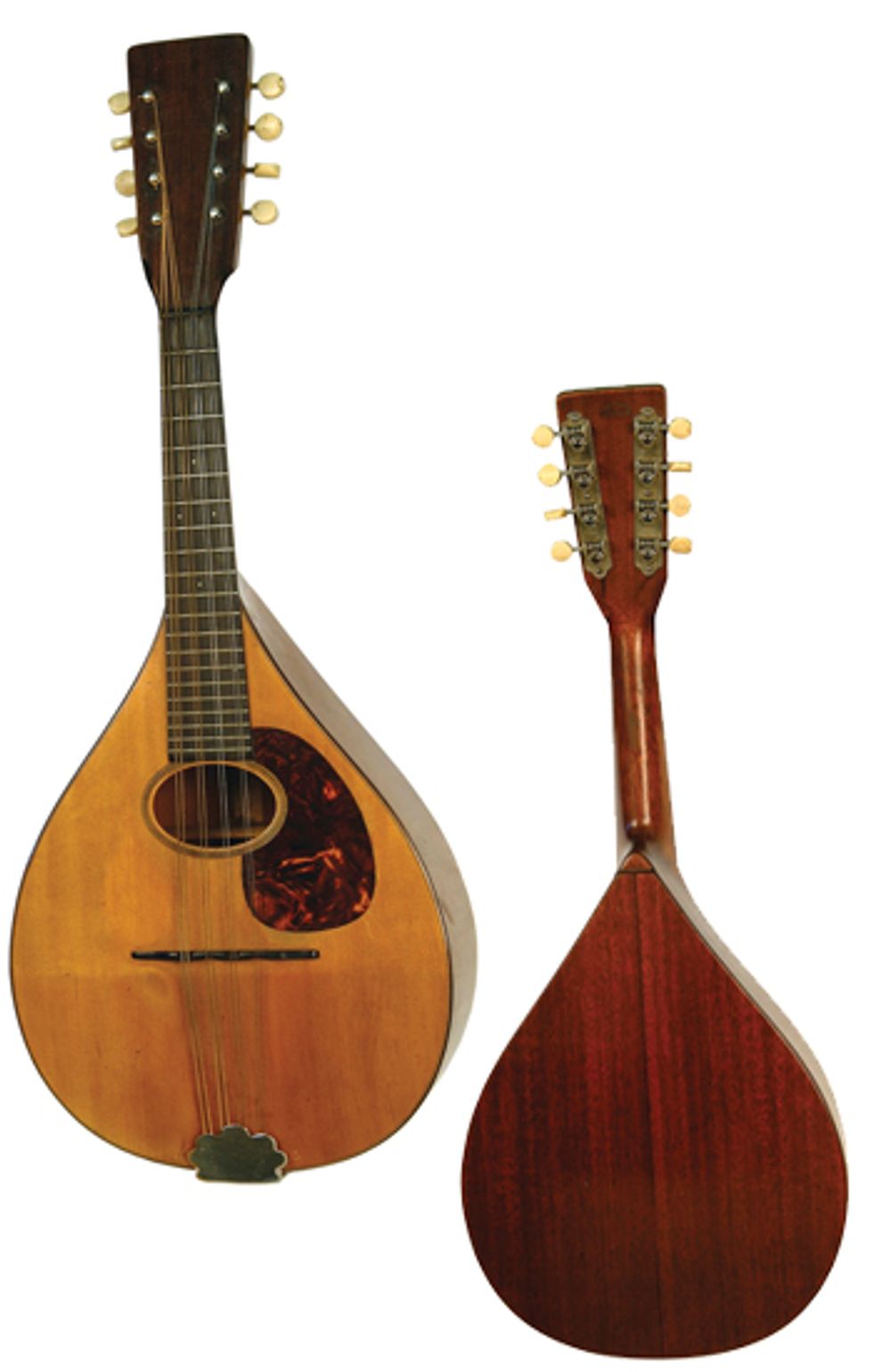Martin mandolins are not worth nearly as much as their guitars, they were a vital component in Martin’s success in the early 20th century.

Produced between 1914 and 1995, Martin’s Style A mandolin was one of the company’s most popular models. This 1926 Style A features a spruce top, engraved tailpiece, and ebony fretboard and bridge. The back, sides, and neck of this 1926 Style A are constructed from mahogany. In excellent condition, the mandolin is currently valued between $800 and $1,000.
Hey Zach,
My grandparents are moving into
an apartment and my family is helping
them with the move out of their
house. We came across this Martin
mandolin that had been in storage
for many years, and my grandfather
told me it belonged to his father.
The only numbers on the instrument
are 129## and no one in my
family really knows anything about
stringed instruments. I do know that
Martin is a famous guitar maker,
but looking online, their mandolins
don’t seem to be worth that much,
which surprises me. Can you give
me a little history about this mandolin,
what it’s worth, and why the
value seems to be so low?
Thanks,
Peter in Akron, Ohio
Hi Peter,
I’m glad to hear that your grandfather
held onto this instrument for so many
years! You’re correct that Martin mandolins
are not worth nearly as much as their
guitars, but I’ll explain how mandolins
were a vital component in Martin’s success
in the early 20th century.
Martin began building guitars in 1833, and throughout the rest of the 1800s, guitars were their main focus. At a young age, F.H. (Frank Henry) Martin, the son of C.F. (Christian Frederick) Martin Jr., became the new president of Martin guitars when his father died in 1888. At that time, Martin had become stale as a company. Their sales were not increasing and other manufacturers—such as Lyon & Healy— were growing exponentially. While this is undocumented, F.H. Martin didn’t want Martin to be left behind, so he propelled the company ahead in the 20th century by getting involved in mandolins.
Mandolins had taken America by storm in the 1880s, and by 1890, Martin had noticed how many mandolins they were repairing that were built by other companies. Martin introduced their first mandolins in 1895 with the G Series, which were fashioned after the Italian bowlback instruments of the day. By the late 1890s, after Martin had streamlined their mandolin line with their style classification system, mandolin production was actually outnumbering their guitar production! Flatbacked mandolins made their debut in the mid- 1910s, and Martin continued to offer mandolins in some capacity through 2006.
Based on the serial number, your great-grandfather’s mandolin appears to be a 1926 Style A. With its spruce top and mahogany back and sides, the Style A utilized some of the same materials as Martin’s Style 18 guitars. Other features of this mandolin include rosewood body binding, a mahogany neck and headstock, ebony fretboard and bridge, four-per-side tuners, an engraved tailpiece, and a tortoise pickguard. The Style A was one of Martin’s most popular models and was offered between 1914 and 1995 as a standard production instrument. In the excellent condition it appears, your mandolin is currently valued between $800 and $1,000.
But $1,000 is a far cry from the $200,000 that Gibson F-5 Lloyd Loar mandolins are currently fetching. So why the disparity? For one, we’re talking about the holy grail of mandolins with the F-5. It has become the elite instrument for mandolinists and the most common mandolin model copied by other manufacturers. While Martin mandolins are well-built instruments, they don’t have the tone and volume of Gibsons. As a whole, Martin has never been able to compete with Gibson when it comes to building archtop and carved-top instruments. Instead, Martin has become the king of flattop builders in many ways, while Gibson has ruled the archtop market.
The popularity of mandolins declined toward the end of the 1920s, with guitars becoming the instrument of choice by the 1930s. This didn’t mean there wasn’t a need for mandolins, since many bands still used them, so manufacturers like Martin continued to produce these instruments. And Martin offered at least one standard model until 1995, the year mandolins became special order only. Not long after, all mandolin production in the US ceased in the early 2000s, though Martin’s factory in Mexico continued to build the Backpacker model through 2006. Currently, Martin no longer offers mandolins.
While Martin mandolins are not viewed as very collectible among mandolin enthusiasts, we shouldn’t forget that without offering mandolins in the early 20th century, Martin might not have survived to become the renowned guitar manufacturer they are today. Though your Martin mandolin may not be worth as much as you would have hoped, it is a great instrument. And an even nicer heirloom since it has been with your family for so long!
 Zachary R. Fjestad
is author of Blue Book of
Acoustic Guitars, Blue Book
of Electric Guitars, and Blue
Book of Guitar Amplifiers.
For more information, visit
bluebookinc.com or email
Zach at guitars@bluebookinc.com.
Zachary R. Fjestad
is author of Blue Book of
Acoustic Guitars, Blue Book
of Electric Guitars, and Blue
Book of Guitar Amplifiers.
For more information, visit
bluebookinc.com or email
Zach at guitars@bluebookinc.com.
